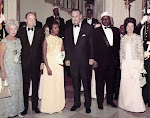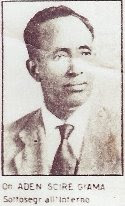Could Al-Shabaab carry out another Westgate-type terrorist attack in Nairobi, or stage a similar outrage in Kampala?
This was one of the questions at the back of the mind of a couple of folks at a meeting of Somali intellectuals and civil society activists held by the African Union’s Somalia mission, Amisom, in Kigali this week.
One of the reasons Kigali was chosen for the meeting was to show the Somalis that no matter how far a country descends into hell, it can rise and shine again — as Rwanda has largely managed to do. Secondly, to help imagine what genocide might look like on a Somalia scale if they don’t get their act together.
Suffice it to say that a Tuesday visit to the Genocide Memorial in Kigali, and a rousing speech later by Alice Karekezi of the Centre for Conflict Management at the National University of Rwanda, left a trail of Somali tears in Kigali on the day.
Inevitably, though, while some lamented that Amisom and nearly everyone else in Somalia had become “obsessed” with Al-Shabaab, it dominated three days of debate and conversation because the uncomfortable truth, as one Somali intellectual put it, is that “Al-Shabaab or its ideology will very much be around for another 20 years”.
The Shabaab has been considerably buoyed by what it considers a spectacularly successful campaign in the attack on Westgate.
Indeed, a few days ago, London-based journalist Jamal Osman posted a revealing video following a rare visit to the group’s training camp in the bushes of Bulo Burto.
The public face of the Shabaab, Sheikh Ali Dhere, is effusive with praise for the Westgate attackers, and most ominously, promises Kenya that he will rain more fire on its head. The video also underscores why Al-Shabaab is not about to die.
To begin with, it is a more efficient group (or for that matter enforcer) and less corrupt, than the government of Somalia.
In Bulo Burto, the Shabaab police is shown on patrol. Where Shabaab rules, the streets are very safe, although the price for law and order is cutting limbs off or stoning to death criminals.
And they do something that not even governments, let alone the police in Uganda, Kenya, or Tanzania, do.
They go around shops making sure no expired goods are sold, and check out the medical supplies in clinics and hospitals to ensure they are not stolen. Elsewhere in East Africa, people in authority are the ones who sell expired goods.
Also, Al-Shabaab is the one group that organises big-time across clans, so it is probably the most nationalist platform now.
In addition, in a Somalia where in recent years many live or die by their clans, and the smaller ones have been locked out of all opportunities, the Shabaab came in and turned tables.
It gives long-marginalised clans administrative jobs, hands them business licences, thus cobbling together a new support base that is solidly in its corner.
There is the view that no international force will ever really defeat Shabaab. Only its mistakes and internal contradictions will.
Indeed Amisom estimates that while the terror group has 6,000 active soldiers, potentially, it can mobilise up to 30,000 if it needed to.
Meanwhile, the Somali National Army has nearly 20,000 troops. Amisom currently has just about 18,000. And they are trying to secure a territory that is almost the size of Afghanistan.
Not counting the international troops, Afghanistan has an army of 220,000 — but they have failed to subdue Al-Shabaab’s cousins, the Taliban.
To think that just 38,000 Somali and Amisom troops can dominate a territory the size of Afghanistan whose 220,000 better trained soldiers can’t, is a bit of a pipe-dream.
The Shabaab will, therefore, have lots of room and freedom to organise and plot.
And for sure, they will come knocking on Nairobi or Kampala’s doors again in the future. Only eternal vigilance, and angels running our governments, will save us.
But the ultimate solution lies in Somalia. Those who want to defeat Al-Shabaab, need to help the country elect a government that is more efficient and honest than the militants.
cobbo@ke,nationmedia.com & twitter:cobbo3



.jpg)











No comments:
Post a Comment